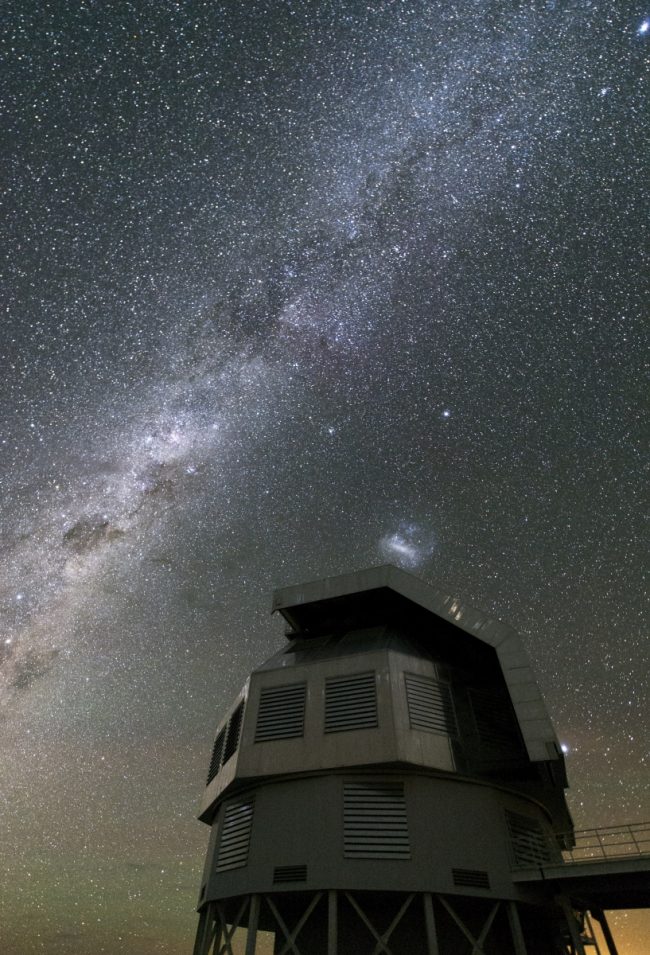
Astronomers at Lowell Observatory in Flagstaff, Arizona, said on March 27, 2018. that they’ve discovered a rare runaway star in the Small Magellanic Cloud, a small satellite galaxy of our Milky Way. The star is speeding across its little galaxy at 300,000 miles per hour (500,000 km/hour). At that speed, it would take about half a minute to travel from Los Angeles to New York. The runaway star is designated J01020100-7122208, and it’s believed to have once been one of two stars orbiting around each other. Astronomers think that, when the companion star exploded as a supernova, the tremendous release of energy flung J01020100-7122208 into space at its high speed.
The star is the first runaway yellow supergiant star ever discovered, and only the second evolved runaway star to be found in another galaxy. A paper about its discovery has been accepted for publication in the peer-reviewed Astronomical Journal and is currently published online via Arxiv. A statement from Lowell Observatory said:
After ten million years of traveling through space, the star evolved into a yellow supergiant, the object that we see today. Its journey took it 1.6 degrees across the sky, about three times the diameter of the full moon. The star will continue speeding through space until it too blows up as a supernova, likely in another three million years or so. When that happens, heavier elements will be created, and the resulting supernova remnant may form new stars or even planets on the outer edge of the Small Magellanic Cloud.
Astronomy graduate student Kathryn Neugent of Lowell Observatory in Flagstaff and the University of Washington in Seattle, Washington, led an international group of astronomers who discovered and studied the star. The Small Magellanic Cloud cannot be viewed from Earth’s Northern Hemisphere. The team made the discovery using the National Optical Astronomy Observatory’s 4-meter Blanco telescope, and the Carnegie Observatory’s 6.5-meter Magellan telescope, both located in northern Chile.
Yellow supergiants are very rare objects because the yellow supergiant phase is thought to be so short. Yet we have some famous examples of yellow supergiants visible in Earth’s skies, including the North Star, Polaris, and the star Canopus, second-brightest star in the entire sky. Lowell Observatory said:
A massive star may live for as much as ten million years but the yellow supergiant phase itself lasts only ten to a hundred thousand years, an eye-blink in the life of a star. After this short time, yellow supergiants expand into giant red supergiants, like Betelgeuse, with sizes as large as the orbits of Mars or Jupiter. These stars eventually die in spectacular supernova explosions.
Thus the newly discovered runaway star is destined to end its life as its companion did, as a supernova, or exploding star.

Bottom line: Astronomers using telescopes in northern Chile have discovered a rare runaway star in the Small Magellanic Cloud. The star is designated J01020100-7122208. It’s speeding across its little galaxy at 300,000 miles per hour (500,000 km/hour).
Source: Runaway Yellow Supergiant Star in the Small Magellanic Cloud











